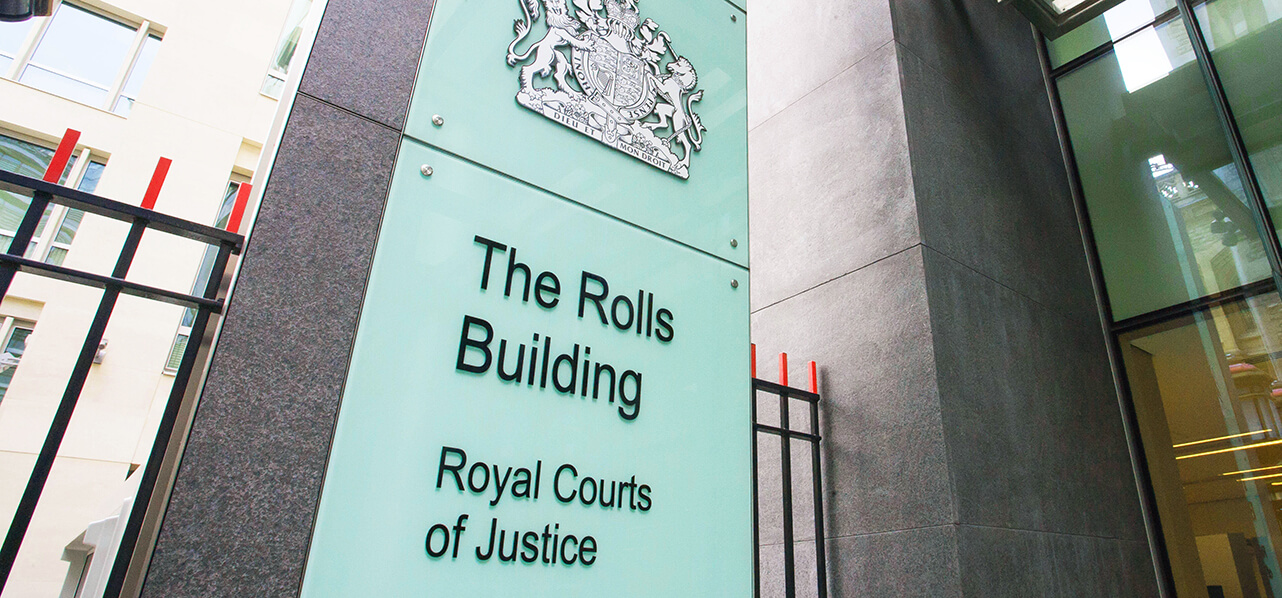Partner Hamburg
"Germany is a frontrunner in the development of a hydrogen market and started to implement the NHS and wider changes to the regulatory environment to support the envisaged ramp-up of the German hydrogen market."
In the following article we will briefly describe the key content of the NHS and the newly implemented EEG 2021, summarise where the discussion in Germany currently stands in relation to the regulation of hydrogen grids and take a look at the implications of Germany’s hydrogen position for the transport, energy and infrastructure sectors.
The German Hydrogen Strategy
The NHS states that hydrogen is another important technology for reducing overall emissions. Germany aims to be greenhouse gas emissions neutral by 2050 and hydrogen is seen as an important tool in reaching this goal. Using hydrogen could result in the reduction of certain industrial greenhouse gas emissions and it is seen as a potential game changer for transport-related emissions too.
The NHS focusses on green hydrogen, which is the only form considered sustainable by the German Government. However, the NHS agrees that blue and turquoise hydrogen⁵ will also play a role in the European hydrogen market due to it being CO2-neutral. The NHS expects that these types of hydrogen will also be used in Germany during a transitional period.
Key content
The NHS identifies several goals that need to be achieved for green hydrogen to become an effective tool in reaching greenhouse gas emission neutrality:
Scale up of hydrogen production capacity
The German government foresees a hydrogen demand of about 90 to 110 TWh by 2030. In order to accommodate this demand, electrolysers with a total capacity of up to 5 GW are to be built in Germany by 2030 (including the offshore and onshore energy production required for providing electricity for the electrolysis). This corresponds to a green hydrogen production of up to 14 TWh and a required renewable electricity quantity of up to 20 TWh. For the period up to 2035, a further 5 GW will be added if possible, by 2040 at the latest.
"The EEG levy shall be reduced to zero for all electricity which is consumed by an undertaking for the purposes of producing green hydrogen."
The NHS acknowledges the risk of the rising electricity demand of the electrolysers actually increasing the CO2 emissions. This risk being further increased by the rising number of e-mobility solutions and an overall move to electrification. Therefore, of equal importance is a corresponding scale up of renewable energy plants.
Challenges identified by the NHS include the current levels of taxes, levies and surcharges to be paid for producing hydrogen. According to the NHS, the German Government should examine whether electricity used to produce green hydrogen can be largely exempted from taxes, levies and surcharges and, in particular, whether the production of green hydrogen can be exempt from the EEG levy (if this can be done without raising the EEG levy).
The German Government kept this promise. According to Sec. 69b EEG 2021, the EEG levy shall be reduced to zero for all electricity which is consumed by an undertaking for the purposes of producing green hydrogen. However, this provision will only enter into force once the German Government has issued a Regulation defining exactly what green hydrogen is and will only apply to production facilities which become operational before 1 January 2030. In addition, the EEG 2021 is still subject to the approval of the European Union for state-aid reasons, so this commitment is still to be confirmed.
Support Schemes (primarily for industrial users)
The NHS clearly identifies the use of green hydrogen as a replacement in industrial processes (in particular in the steel and chemicals industries), where grey hydrogen is currently used, as its main goal.
In order to help industrial users invest in new technologies facilitating the use of green hydrogen (e.g. by building new electrolysers), the NHS states the German Government will set up a new pilot programme for Carbon Contracts for Difference (CfD). In doing so, the German Government guarantees to support the differential costs between actual abatement costs or a project-related, contractually defined CO2 price per avoided quantity of greenhouse gas emissions and the ETS prices. This will significantly reduce the risk of changing CO2 prices for investors. According to the NHS, CfDs could also be used in other industry sectors if the pilot is successful.
While the German CfD programme is still being developed at the time of the writing of this article, the EEG 2021 already contains a specific provision (Sec. 64 a EEG 2021) reducing the EEG levy for producers of industrial gases provided that the electrochemical production of hydrogen makes the largest contribution to the company’s total value creation.
"To help industrial users invest in new technologies facilitating the use of green hydrogen, the German Government will set up a new pilot programme for Carbon Contracts for Difference (CfD)."
Scale-up of hydrogen transport capacity
To facilitate the use of green hydrogen in each of the identified application areas (energy and energy storage, industrial use and fuel alternative), the NHS highlights the need to scale-up the hydrogen transport and distribution capacity. This includes the expansion of already existing hydrogen infrastructure as well as the rededication of natural gas transport infrastructure that is no longer needed for natural gas transport (such as L-gas). Finally, the NHS notes that ensuring the hydrogen compatibility of existing or modernised gas infrastructure will be examined (e.g. by raising the percentage of hydrogen that can be mixed with natural gas). With regard to the latter, an important technical regulation (DVGW Regulation G 260) was amended in December 2020 to procure the use of hydrogen in existing gas grids.
Public Funding
The NHS commits to Germany providing public funding amounting to €7bn for the market ramp-up of hydrogen technology in the country. The actual programmes and requirements under which the funds will be made available are currently being developed by the relevant ministries.
Action plan
An important item of the NHS is an action plan listing 38 concrete measures which shall ensure the success of the NHS. These measures represent the first phase of the NHS (2020-2024), in which the market ramp-up shall be achieved and the foundations for a functioning domestic market shall be built. The measures are relating to the following overarching topics:
– Production of Hydrogen;
– Areas of Application with the following sub-sectors:
– Traffic;
– Industry; and
– Heating
– Infrastructure and Supply;
– Research, Education and Innovation;
– European Need for Action; and
– International hydrogen market and foreign trade partnerships.
"A large part of the comments see admixture as a cost-intensive measure due to necessary adjustments and a cost-intensive under-utilisation of the high-quality fuel that is needed in industry to achieve the decarbonisation goals."
Hydrogen grids and regulations
In its paper on the current regulatory environment for hydrogen, the Federal Network Agency (FNA) speaks clearly in favour of a regulatory environment for hydrogen (grey, blue and green) and contemplates that green hydrogen may be given regulatory privileges. In order to achieve a clear regulatory framework, the legislator should consider whether a specific hydrogen/hydrogen infrastructure law would be preferable, rather than amending the current framework applying to power and gas to include hydrogen. Should the legislator decide to amend the existing framework, the FNA argues hydrogen would require a specific chapter within the Energy Industry Act, as a mere amendment of the definition of natural gas to include hydrogen would not be sufficient to cover the specific hydrogen-related requirements. Finally, the FNA speaks strongly in favour of applying unbundling rules to the hydrogen sector, but caveats this with the suggestion that specific rules and transitory provisions for existing hydrogen infrastructure and isolated grids should apply.
In addition to its paper, the FNA issued a catalogue of 43 questions that take up the core theses of the paper which formed the base for the subsequent market survey. The results of this survey were published in an additional report⁶, which provides policymakers with further, substantive contribution to the discussion on the future framework conditions of the emerging hydrogen economy. The results of the survey can be briefly summarised as follows:
1) There is no clear market opinion as to whether hydrogen should be added in a greater volume to natural gas grids. A large part of the comments see admixture as a cost-intensive measure due to necessary adjustments and a cost-intensive under-utilisation of the high-quality fuel that is needed in industry to achieve the decarbonisation goals. The admixture of hydrogen could only be seen as an intermediary measure on the way to pure hydrogen grids. The opposing opinion, which also has many supporters, especially among the gas grid operators, sees the blending at all grid levels as a quick way to decarbonise all sectors. However, the maximum volume of hydrogen added should not exceed 20%.
2) The consultation asked about the likelihood of the realisation of three infrastructure scenarios:
(a) local island grids (Scenario I);
(b) local island grids with individual transport lines (Scenario II); and
(c) tightly meshed distribution networks with individual transport lines (Scenario III).
"Most respondents agreed that regulation should be introduced if there is an abuse of market power or discrimination, and most considered this scenario likely in the absence of regulation."
The majority of the market is of the opinion that over time, all three scenarios will be run through. Equally, almost all participants in the consultation expect a cross-border transport of hydrogen and thus also a cross-border transport of energy. The majority of respondents also expect the same division of roles and responsibilities between Transmission System Operators and Distribution System Operators in a future “H2 world”, while adding that storage operators will also play an important role. Finally, participants agreed that the structure of the regulatory framework will be a decisive factor in determining how competition for hydrogen will develop.
3) Should regulation for pure hydrogen networks be introduced? Most respondents agreed that it should if there is an abuse of market power or discrimination, and most participants considered this scenario likely in the absence of regulation. Some participants also highlighted that this would provide additional certainty for investment decisions.
4) The majority of comments are in favour of a fundamental adoption of the existing access, tariff and unbundling regulations. However, it is also emphasised that hydrogen-specific adaptations are necessary, in particular with a view to the fact that the hydrogen market is nascent. An intense and strict regulation could inhibit market development and be a barrier to entering the market. A dynamic regulation was considered as the optimal solution, which reflects the status-quo of the hydrogen market.
5) A feed-in priority for green hydrogen was rejected by a small majority of the participants in the consultation, predominantly for reasons of ensuring rapid market development and meeting industrial demand. It has to be noted though that the opposite view (i.e. a priority feed-in for green hydrogen) is also supported by many participants.
"In order to meet the goals set by the NHS on new production capacities for green hydrogen, new renewable energy facilities will be required."
6) The majority of respondents were in favour of cause-related charges that are largely free of incentive mechanisms to control the demand for hydrogen. In particular, network operators advocated a joint pricing of natural gas and hydrogen infrastructure on the basis of the existing regulatory regime. With regard to the application of the Ordinance on Incentive Regulation (ARegV), opinions are rather heterogeneous. Some commentators were in favour of such an application. As a counterpoint, however, the argument was put forward that the ARegV is not an adequate regulatory instrument for new infrastructure, as it was designed for existing networks. The use of an efficiency comparison is not considered appropriate by some of those consulted while other participants consider the use of an efficiency comparison to be sensible, at least in the long term. With regard to the application of a cost-plus regulation, the response spectrum was again heterogeneous. Yardstick regulation was deemed inexpedient.
The German Ministry for Economic Affairs and Energy has presented a first draft of an amendment to the Energy Industry Act introducing certain regulatory provisions specifically applying to hydrogen grids. However, this draft is currently under discussion and it remains to be seen how the final provisions will look.
Impact on Energy, Transport and Infrastructure sectors
It is safe to say that the NHS and its implementation will have an impact on the energy, transport and infrastructure sectors.
Energy
The most obvious impact the NHS will have is in the energy sector. In order to meet the goals set by the NHS on new production capacities for green hydrogen, new renewable energy facilities will be required. Moreover, with the raised goals set by the EEG for renewable energy production facilities there will be significant additional demand for renewable energy facilities. This puts pressure on the German Government to ensure that these demands can be met.
Certainly, offshore wind still has major potential, and it is only a matter of time until the first project combining offshore wind with hydrogen production sees the light of day. Some companies already have concrete plans in this regard. In relation to onshore wind, the main task for the German Government will be to simplify the permitting procedure which is currently the biggest bottleneck for an onshore wind farm in Germany. However, considering the current European legislation in relation to protection of endangered species and third-party rights to claim against permits, this will not be an easy task.
"Hydrogen may further accelerate the renaissance of German solar projects. We are already seeing some really interesting ideas in this regard that make use of greenfield solar projects, PPAs and electrolysers."
Finally, hydrogen may further accelerate the renaissance of German solar projects. We are already seeing some really interesting ideas in this regard that make use of greenfield solar projects, PPAs and electrolysers. Similarly, hydrogen can play a role in energy storage. If the preliminaries for non-payment in case of negative market prices are further reduced (currently four hours), it may make sense to use small-scale electrolysers to produce green hydrogen, rather than shutting off renewable plants.
Transport
In relation to the transport sector there is both a short- and medium-term impact. The short-term impact is certainly to use hydrogen as a fuel, especially in public transportation systems. Initial projects have emerged where the entire business model only made sense financially because the hydrogen was used by a municipality to supply its vehicles. With the newly introduced CO2 tax in Germany, and the rising gas prices this will cause, this could make more municipalities consider whether hydrogen could be used as an alternative fuel. In the mid-term, hydrogen may become an important fuel in the German shipping sector. However, this will depend on whether the demand for green hydrogen this use would cause can be met.
Infrastructure
It is interesting to note that Germany has already given some substantial thought on the correct regulatory set-up for the use of hydrogen infrastructure. We assume that one of the main reasons for this is that it is likely that Germany will not be able to build all the required renewable energy plants on German soil. The NHS therefore notes the importance of partnerships to make use of production facilities outside of Germany, both green hydrogen and renewable power. This strategy will, however, only be successful if green hydrogen can be transported easily within Germany once it has reached German borders. It is acknowledged that we are unlikely to see a liquified hydrogen terminal within the next ten years. However, Germany is already starting to get its head around the important regulatory questions that a hydrogen-driven energy market needs to answer.
"All of this makes Germany, arguably, the most developed hydrogen market in Europe."
summary
Germany is a frontrunner in the development of a hydrogen market. Not only has the German Government presented a detailed hydrogen strategy naming no less than 38 individual measures to be taken, but the FNA has also shared its view on the future regulation of hydrogen infrastructure and conducted a detailed market survey. In both instances, the legislator has already started to implement the NHS and wider changes to the regulatory environment to support the envisaged ramp-up of the German hydrogen market. All of this makes Germany, arguably, the most developed hydrogen market in Europe.
This is the third article in our ‘Hydrogen – What is the hype about?’ series, which provides an overview of the hydrogen sector and the strategy for its development in multiple jurisdictions. To read other articles in the series please click here.
To Opt In to WFW mailings and register for alerts on our forthcoming articles as soon as they are published, please email us here.
[5] For a tutorial on the “hydrogen rainbow” please refer to Introducing hydrogen – A beginner’s guide https://www.wfw.com/articles/introducing-hydrogen-a-beginners-guide/
Key contacts
Partner Hamburg
Partner Munich





